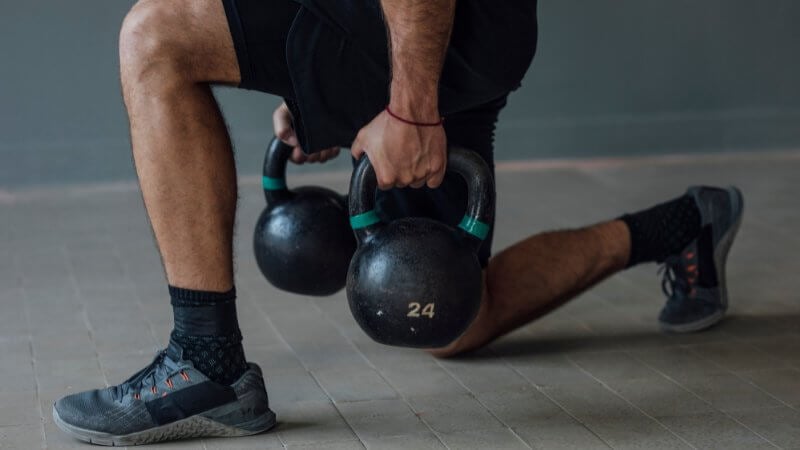As a coach committed to optimizing athletes’ performance, understanding the nuances of training methodologies is essential. In this post, I want to synthesize the findings from several key studies on the effects of concurrent strength and endurance training on running economy and performance. By examining the benefits and limitations of various training modalities, we can develop a holistic approach to training that maximizes runners' potential.
If you are also a cyclist, I wrote a similar post on how to improve climbing, sprinting and long-distance comfort while cycling with strength training.
The Impact of Resistance Training on Running Performance
One of the pivotal studies in this field, conducted by Yamamoto et al. (2008), systematically reviewed the effects of resistance training on highly trained endurance runners. The study concluded that incorporating resistance training into endurance training regimens significantly improved running economy (RE) by an average of 4.6% and enhanced performance in distances ranging from 3K to marathons by approximately 2.9% . This improvement is attributed to several physiological adaptations, including increased force production, improved muscle coordination, and enhanced motor unit recruitment.
What is running economy? (tap to expand)
Running economy refers to the amount of oxygen consumed (VO2) at a given running speed. It is a measure of how efficiently a runner uses oxygen to maintain a specific pace.

While running is primarily a lower-body activity, upper body training plays a crucial role in enhancing overall running performance. Regular full-body calisthenics training will contribute to your development as a stronger, more efficient, and well-rounded runner. For this you can check out our 6-week beginner calisthenics workout routine.
Comparing Plyometric and Dynamic Body-Weight Training
In another study by Patoz et al. (2023), the effects of concurrent endurance training combined with either plyometric (CSET-PLY) or dynamic body-weight training (CSET-DYN) were examined. Over an 8-week period, both training modalities were found to significantly improve RE without causing major changes in running biomechanics . Interestingly, the study highlighted that high responders to the training showed notable improvements in RE and slight increases in step frequency (SF) for the CSET-DYN group, while low responders did not exhibit significant biomechanical changes .
What is Concurrent Training? (tap to expand)
Concurrent training refers to a training regimen that integrates both strength (resistance) and endurance exercises within the same workout schedule.
Heavy Resistance Training vs. Plyometric Training
Eihara et al. (2022) conducted a comprehensive meta-analysis comparing heavy resistance training to plyometric training. The findings suggest that heavy resistance training, particularly with nearly maximal loads (≥ 90% of one repetition maximum), is more effective in improving RE and running time trial performance than plyometric training . The study also indicates that both training modalities are beneficial, with heavy resistance training being more advantageous for athletes with higher VO2max and at higher running speeds .
Strength Training Modalities and Their Specific Effects
Llanos-Lagos et al. (2023) expanded on the differential impacts of various strength training methods. Their systematic review indicated that while both high-load strength training and plyometric training improve RE, their effectiveness varies with running speed and the athlete’s fitness level. Specifically, plyometric training is more effective at lower speeds (≤ 12 km/h), whereas high-load strength training shows greater improvements at higher speeds and for athletes with well-developed VO2max .
Practical Implementation for Runners
Integrate Strength Training into Your Routine
One of the most impactful strategies you can adopt is incorporating strength training into your regular training regimen. Based on the findings from these studies, adding two to three strength training sessions per week can significantly improve your running economy (RE) and overall performance. Focus on lower-body resistance exercises such as squats, lunges, and leg presses, which enhance muscular strength and coordination. Additionally, include plyometric exercises like jump squats, box jumps, and bounding drills to improve explosive power and neuromuscular efficiency.
Tailor Your Training to Your Specific Needs
Understanding that different training modalities can yield varying results depending on your fitness level and running speed is crucial. If you are an athlete with a well-developed VO2max and you run at higher speeds, incorporating heavy resistance training (e.g., lifting weights at 85-90% of your one repetition maximum) can be particularly beneficial. Conversely, if you typically run at lower speeds, plyometric training may offer more significant improvements in running economy. Customizing your strength training approach based on these factors will help you achieve optimal results.
Balance Endurance and Strength Workouts
Effective concurrent training requires a balance between endurance and strength workouts to avoid the interference phenomenon, where one type of training negatively impacts the other. Aim for a 3:1 ratio of endurance to strength training sessions. For example, if you have nine endurance workouts per week, integrate three strength training sessions. This balance helps ensure that your strength gains complement your endurance capabilities, leading to better overall performance without causing excessive fatigue or overtraining.
Monitor Your Progress and Adapt
Regular assessment of your training progress is essential to ensure that the interventions are effective. Use tools such as running economy tests, time trials, and strength assessments to track your improvements. Pay attention to how your body responds to different training loads and adjust your program accordingly. If you notice significant improvements in RE and performance, continue with the current regimen. If progress stalls or you experience excessive fatigue, consider adjusting the intensity or volume of your strength training sessions.
Focus on Non-Failure Training
When incorporating strength training, avoid training to failure (performing repetitions until you can no longer maintain proper form). Training to failure can lead to excessive fatigue, reduce muscle power output, and negatively affect running performance. Instead, perform exercises at submaximal loads with a focus on maintaining proper technique and maximizing neuromuscular efficiency. This approach will help you build strength and power without compromising your endurance training.
By applying these actionable takeaways, you can enhance your training regimen, improve your running economy, and boost your overall performance. Integrating well-balanced strength training into your routine, tailoring your workouts to your specific needs, and continuously monitoring your progress will set you on the path to achieving your athletic goals.
Calisthenics Exercises For Runners
In the video below you can find some calisthenics exercises you can practice at home to improve your running performance.
References
1. Balsalobre-Fernández, C., Santos-Concejero, J., & Grivas, G. V. (2016). Effects of strength training on running economy in highly trained runners: A systematic review with meta-analysis of controlled trials. Journal of Strength and Conditioning Research, 30(8), 2361-2368.
2. Eihara, T., Uchida, R., Kitamura, K., & Kato, Y. (2022). Heavy resistance training versus plyometric training: A meta-analysis of effects on running economy and time trial performance. Journal of Sports Science and Medicine, 21(1), 111-120.
3. Llanos-Lagos, C., Sáez de Villarreal, E., & Izquierdo, M. (2023). Comparative effects of high-load strength training and plyometric training on running economy in trained runners. Sports Medicine Open, 9(2), 205-219.
4. Patoz, J., Aoki, M. S., & Coutts, A. J. (2023). Concurrent endurance training with either plyometric or dynamic body-weight training both improve running economy with minimal or no changes in running biomechanics. European Journal of Applied Physiology, 123(5), 987-998.
5. Yamamoto, L. M., Lopez, R. M., Klau, J. F., Casa, D. J., Kraemer, W. J., & Maresh, C. M. (2008). The effects of resistance training on endurance distance running performance among highly trained runners: A systematic review. Journal of Strength and Conditioning Research, 22(6), 2036-2044.




